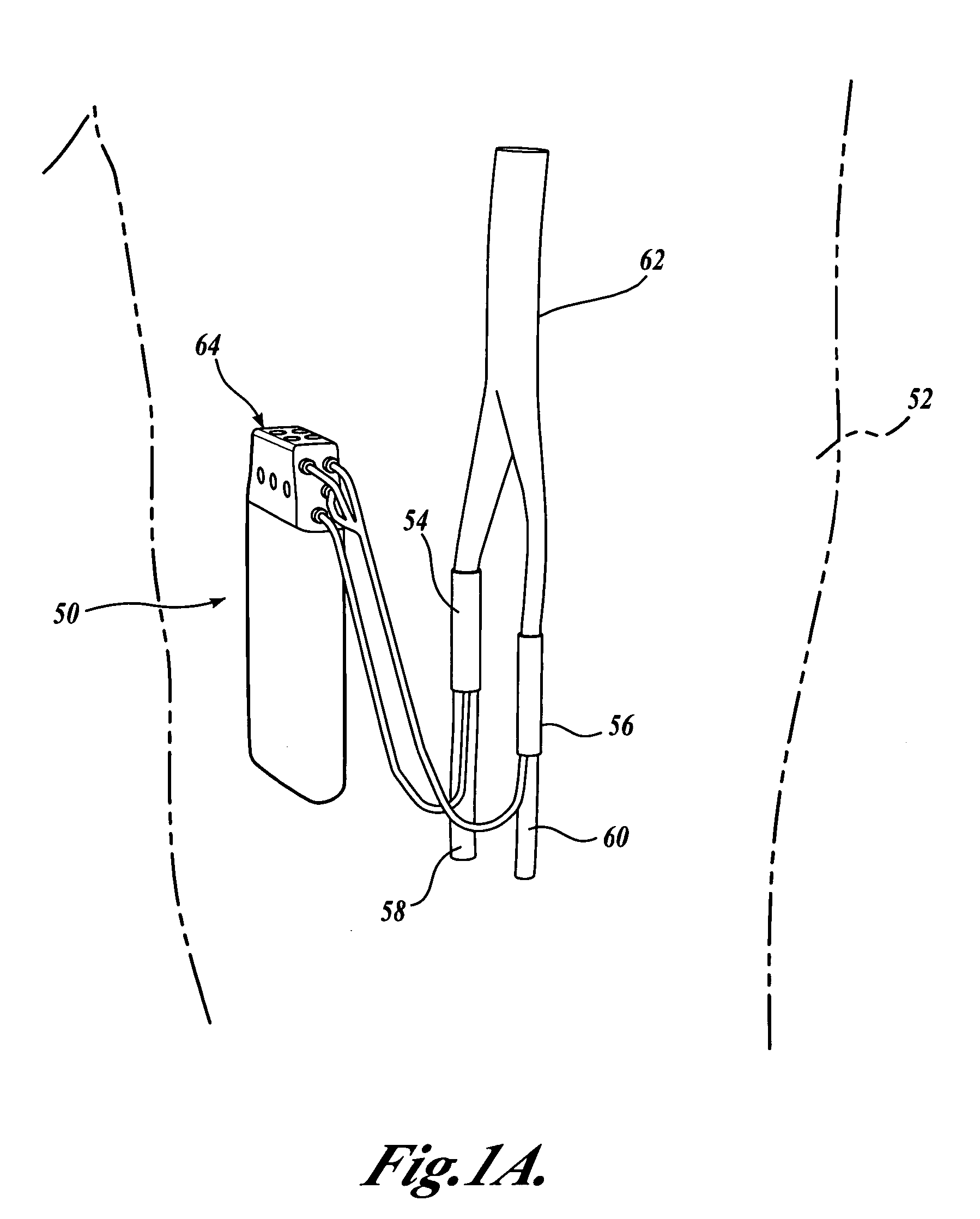Fully implantable nerve signal sensing and stimulation device and method for treating foot drop and other neurological disorders
- Summary
- Abstract
- Description
- Claims
- Application Information
AI Technical Summary
Benefits of technology
Problems solved by technology
Method used
Image
Examples
Embodiment Construction
As indicated above, the present invention is a totally implantable system for selectively sensing gait-related events from sensory nerve signals and for electrically stimulating nerve fibers in order to produce a desired movement or physiological response. Although the disclosed embodiment is directed for alleviating foot drop, it will be appreciated that the invention could be used to alleviate other conditions, such as bladder incontinence, obstructive sleep apnea, phrenic nerve stimulation, control of prosthetic limbs, etc., by programming the device to detect different features from nerve signals sensed from a certain nerve and to stimulate the same or different nerve fibers.
As shown in FIG. 1A, a closed-loop nerve stimulation system of the present invention includes an implanted sensing and electrical stimulation control unit 50 that is surgically positioned entirely within the thigh 52 of a patient. The closed-loop control unit 50 receives sensed sensory nerve signals from ...
PUM
 Login to View More
Login to View More Abstract
Description
Claims
Application Information
 Login to View More
Login to View More - R&D
- Intellectual Property
- Life Sciences
- Materials
- Tech Scout
- Unparalleled Data Quality
- Higher Quality Content
- 60% Fewer Hallucinations
Browse by: Latest US Patents, China's latest patents, Technical Efficacy Thesaurus, Application Domain, Technology Topic, Popular Technical Reports.
© 2025 PatSnap. All rights reserved.Legal|Privacy policy|Modern Slavery Act Transparency Statement|Sitemap|About US| Contact US: help@patsnap.com



